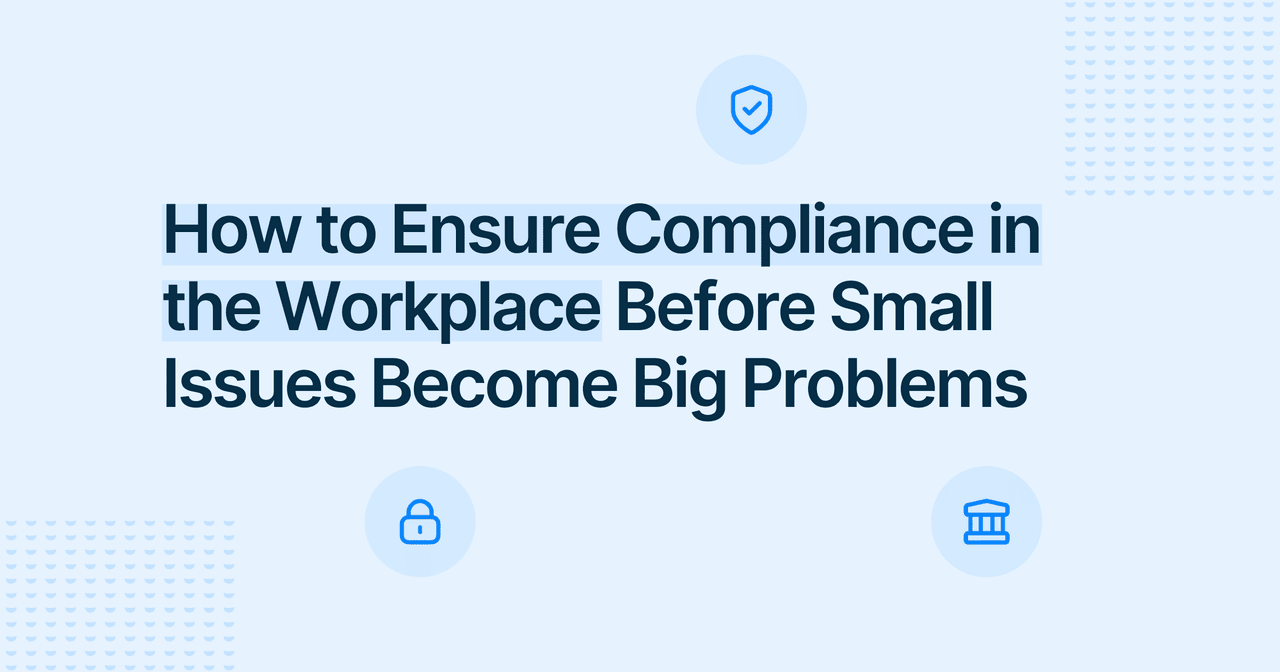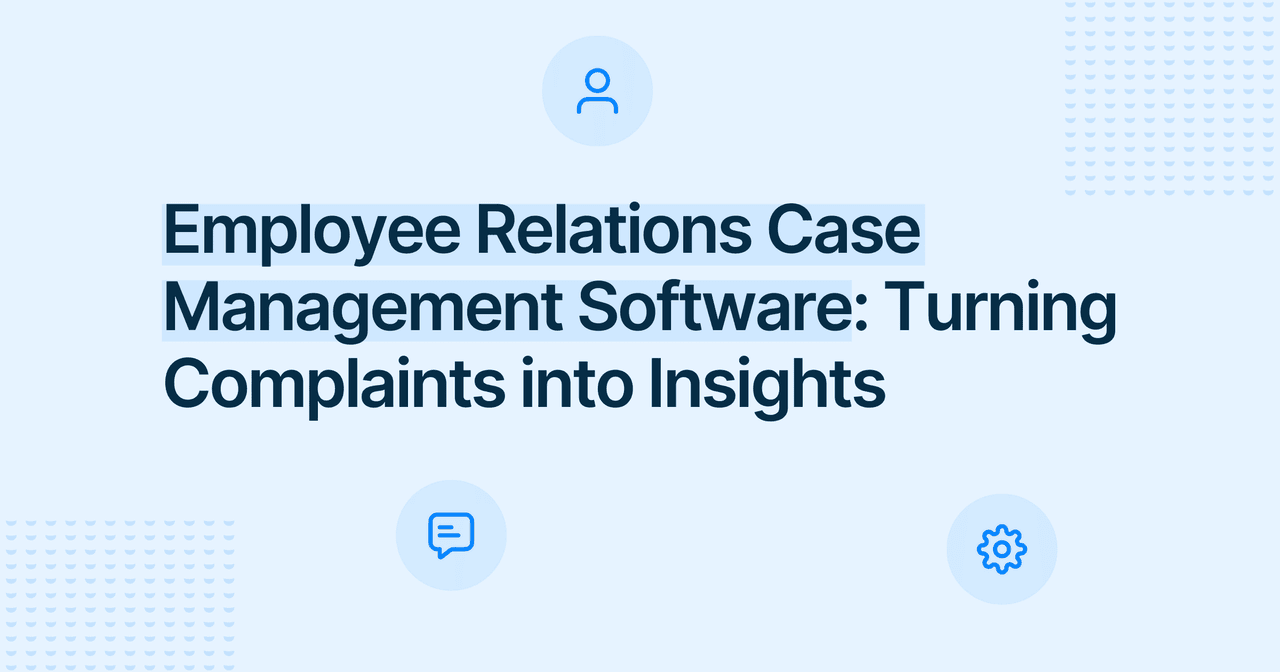Current Whistleblowing Solutions in Companies
Whistleblowing

Helena Jezkova
Marketing Manager
Published
2022-02-01
Reading time
6 min


Table of contents
Subscribe to our newsletter
According to a European Union report, 42 % of workers reported that they do not know how or where to report misconduct. Another report by the EU Public Consultation on Whistleblowing shows that 35 % of employees do not trust that whistleblowing will lead to a positive change.
These results, together with the barriers listed above, illustrate three main goals whistleblowing program needs to reach to be a success:
- Workers need to understand whistleblowing processes and tools and believe in them.
- The process should ensure that employees feel safe and protected when making a report.
- Every report should be investigated as soon as possible, and based on it, positive changes should be implemented.
The core foundation needed to reach all three goals is establishing the clear whistleblowing process and using the right tool. This section will cover the tools and processes most commonly used in the companies as well as discuss their flaws and benefits.
Besides whistleblowing systems, there are other ways to reveal misconduct, such as internal or external audits. However, these audits are expensive, especially compared with whistleblowing systems, and, as seen in the graph below, they are much less effective for revealing misconduct.
Reporting to the direct supervisor
According to the National Business Ethics Survey of the US workforce, 82 % of reports are made directly to the supervisor, either face-to-face or indirectly. On the one hand, this is a signal of a positive culture. On the other hand, this reporting channel can become unusable if the supervisor is the one involved in the misconduct. Furthermore, the upcoming EU whistleblowing directive requires companies to provide a high level of protection for whistleblowers, as well as effective reporting channels. Even though reporting directly to the manager can sometimes yield positive benefits, it cannot be considered suitable under this directive, which affects not just EU-based companies, but also their partners from other regions.
Telephone hotline
Telephone hotlines are in many ways historical leftovers, as the phone was the most convenient communication tool for much of the previous century. Nowadays, their benefits are minor — older employees can be more comfortable with using the telephone than the internet, or they can be preferable in the areas with limited internet access. It is also a cheap solution that can be quickly designed.
Other than that, phone hotlines have more disadvantages than advantages. Younger generations generally prefer the internet over phone calls. Phone hotlines require employees to have privacy to make the call, which can be hard to find at their workplace. This can especially be an issue if the lines are not open 24/ 7, and workers can not make a call outside of work hours. If the hotlines are inadequately staffed, people can end up on a long hold. If they already have cold feet, this waiting time can be what pushes them towards not reporting. If the call centre operator is not adequately trained, or the hotline does not support your employee’s native language, making a report can become very difficult. This is not an exhaustive list of disadvantages of the phone hotlines but, it illustrates how they are in many ways unsuitable, especially if used as the only reporting tool. Employees also need to conceal their own personal phone number, which can be challenging for less tech-savvy people.
Complaint boxes
These are physical boxes situated in the office, in which employees can drop off their reports. They have similar benefits as the telephone hotlines — they might be preferred by older employees, and can be useful when internet access is limited. Also, less tech-savvy employees may be concerned about the kind of information being collected via call or the internet, making them hesitant to report misconduct. However, the anonymity of physical boxes is easy to comprehend.
Complaint boxes, however, come with some significant disadvantages. They may be perceived as outdated by younger employees, even more so than telephone hotlines. Unless the employees sign their name, they are a one-way communication system — once a person provides their anonymous report, there is no way to contact them if a follow-up is needed. There is more work needed from the person collecting and logging these reports, as they will have to input them manually to the central database if there is one. Furthermore, even if these boxes can provide anonymity if set up properly, there is a real possibility that employees can be seen using them.
Simple online whistleblowing tools
Online tools can be quite simple, for example email or a Google form. They have advantages compared to other systems — unlike managerial reports, they do not rely solely on the supervisor. When compared to telephone hotlines, they provide 24/ 7 access, minimise hold times and mitigate a language barrier. They lower costs as they do not require trained call centre staff, as phone hotlines do. As an added benefit, reporters can attach proof, if they have any. Unlike physical boxes, these online tools do not require whistleblowers to be present in the office and expose themselves to the risk of being seen while filing a complaint. Data collection is also easier as information is already online, and depending on how the system was set up, there is the possibility of opening a two-way communication.
Despite their favourable comparison to other sources, these simple online tools still have a number of disadvantages. Reports are not collected and sorted in one centralised system, which means that this part of the process still needs to be done by a person or a team. If there are many reports that need to be sorted manually, valuable information can be lost or overlooked. Also, these sources allow for data manipulation and mismanagement. For example, individual emails or Google form reports can easily be deleted. Counterintuitively, these simple tools can make it harder to provide anonymity. If employees want to make an anonymous report, they would need a separate email account not related to the work one which can be a difficulty for less tech-savvy employees. It is also possible that someone can hack the email and read the reports.
Each commonly used whistleblowing tool has a set of advantages and disadvantages. As studies show, if organisations want to maximise the chances employees will report misconduct, it is necessary to implement multiple solutions. However, this is often complicated and costly, and companies end up with complex policies that can result in confusing employees instead of making whistleblowing easier. Also, more reporting channels mean more work for the people in charge of them, as they need to sort them all into one system. A better solution is to introduce a single, easy-to-use tool that will address the disadvantages of other ones. We will discuss such a tool in the next chapter.
Keep Reading

Alaa El-Shaarawi2025-12-087 min
What Is an Ethical Code of Conduct? The System Behind Ethical Behavior in Business & Healthcare
Workplace Environment

Alaa El-Shaarawi2025-12-058 min
Non-Compliance in the Workplace: Spot, Report, and Prevent Risks Before They Escalate
Legal & Compliance

Alaa El-Shaarawi2025-12-048 min
The Best Workplace Compliance Solutions for Safety, Reporting, and Legal Peace of Mind
Legal & Compliance

Alaa El-Shaarawi2025-12-037 min
How to Ensure Compliance in the Workplace Before Small Issues Become Big Problems
Legal & Compliance


